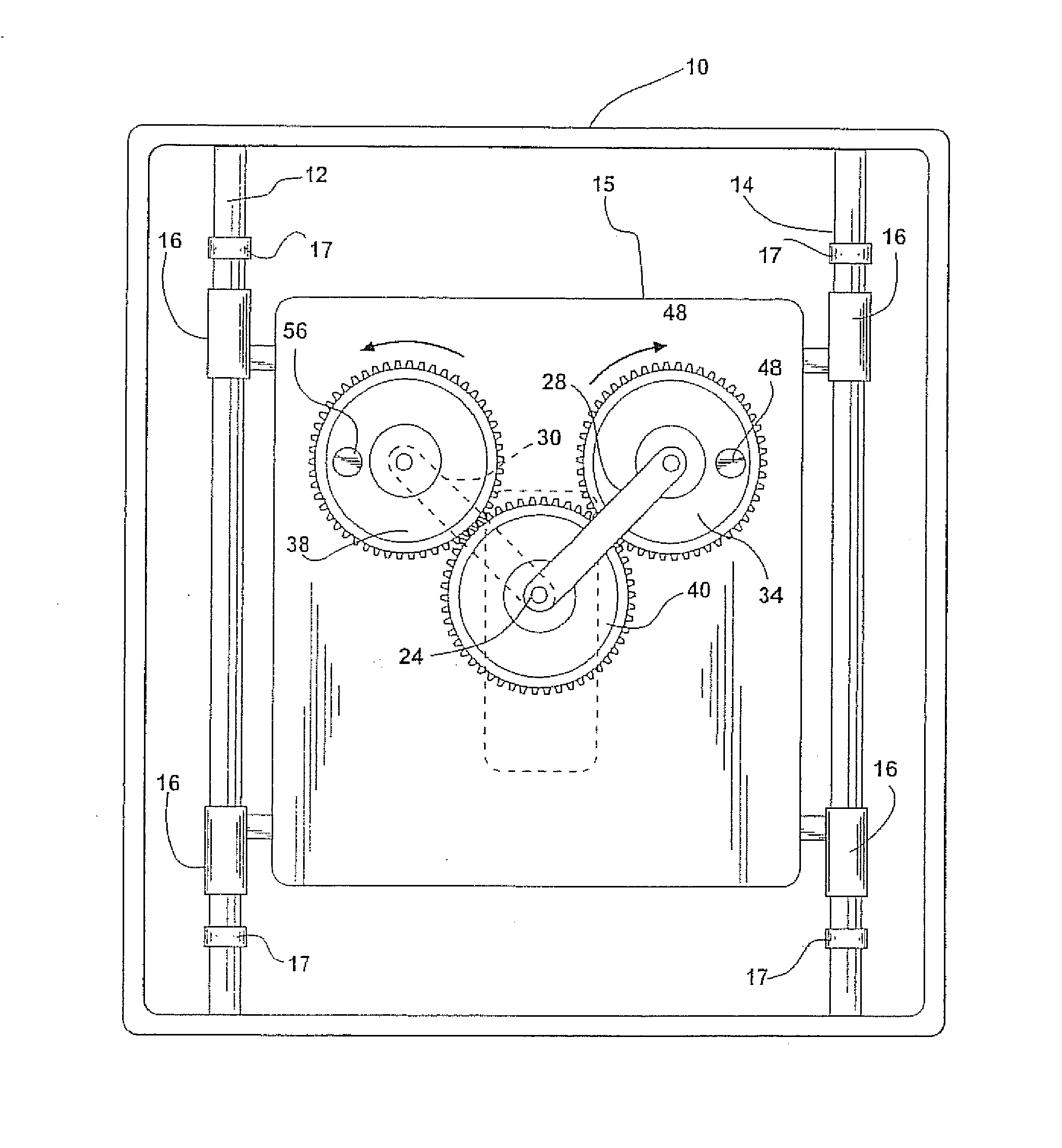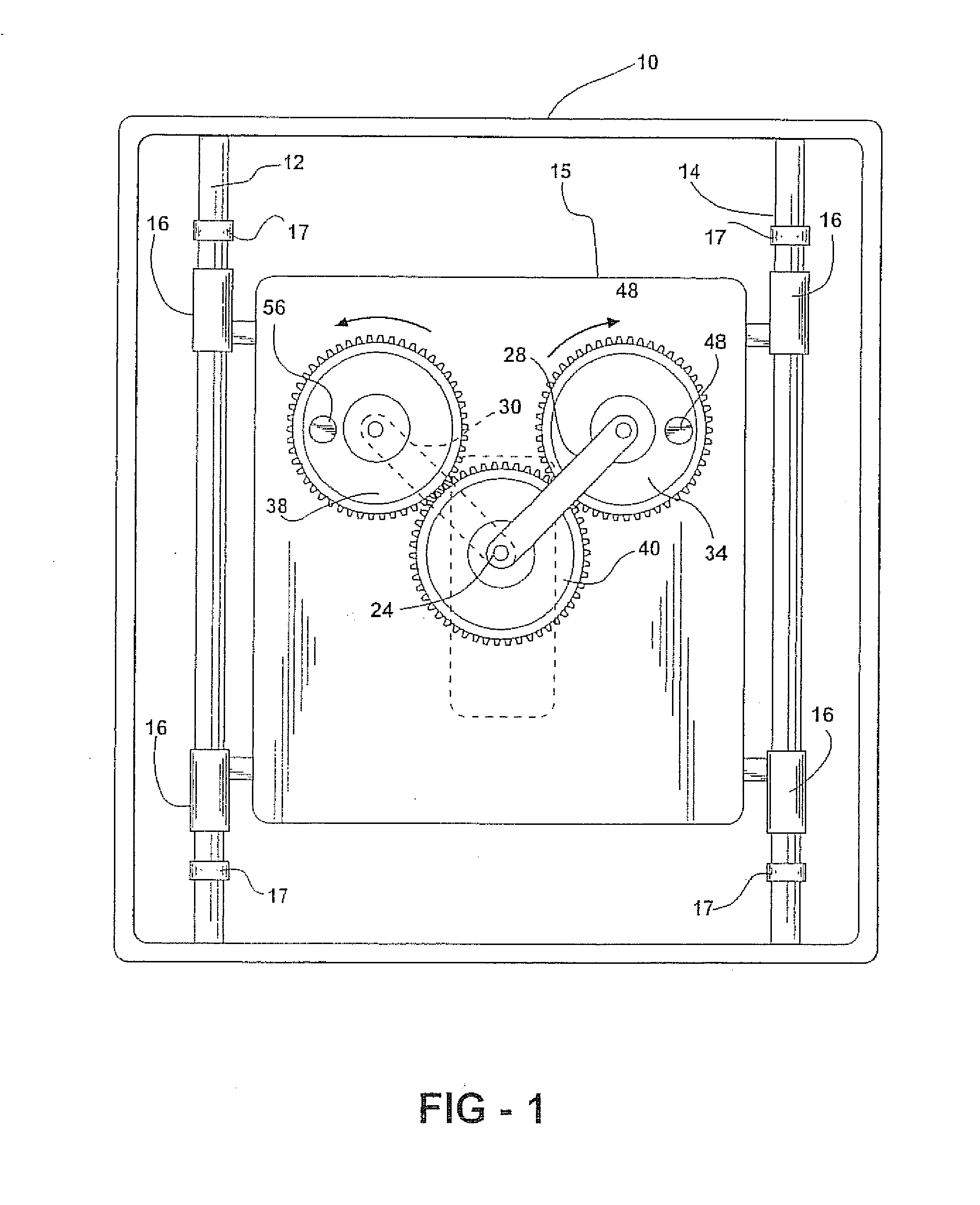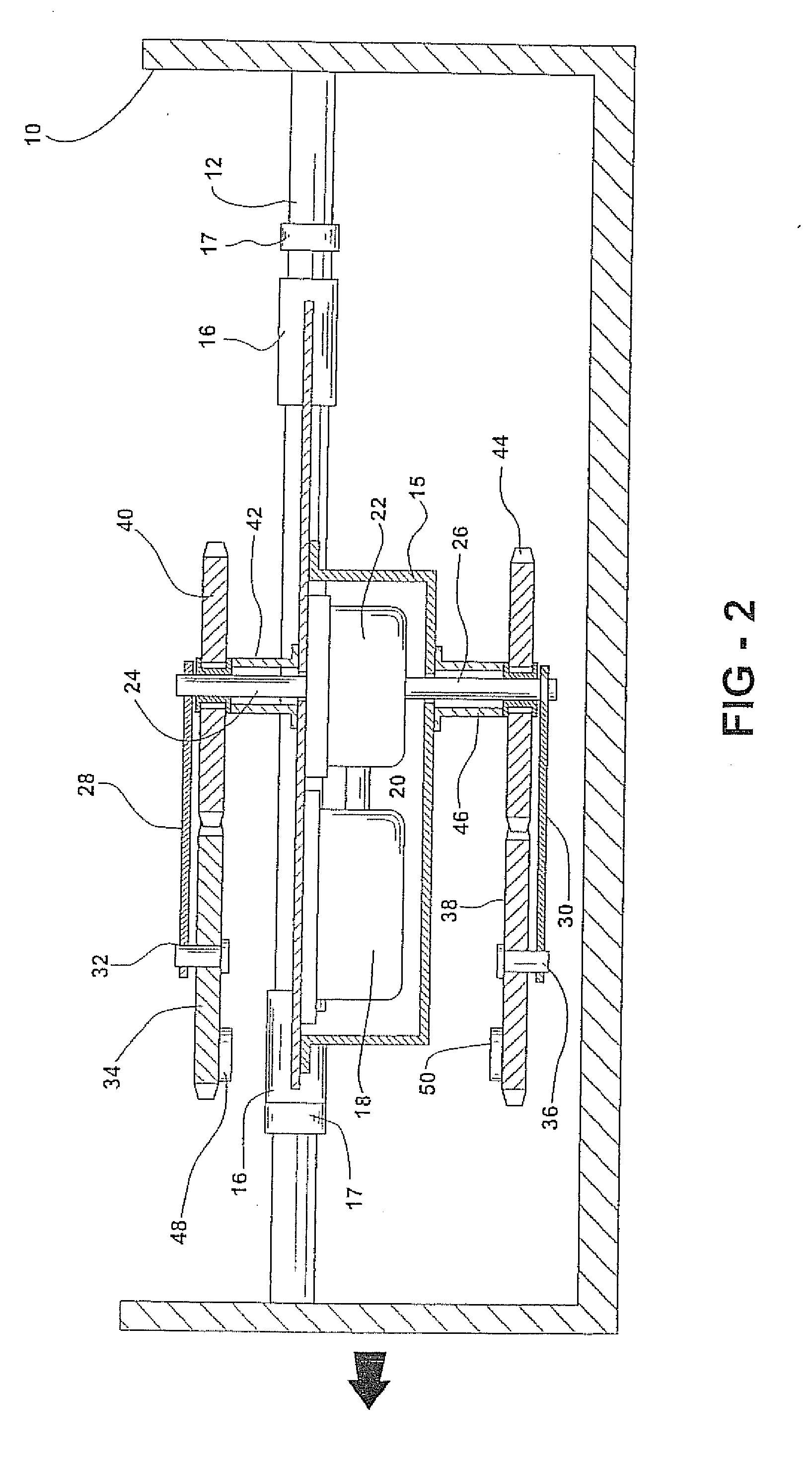Propulsion mechanism employing conversion of rotary motion into a unidirectional linear force
a technology of unidirectional linear force and rotational mechanism, which is applied in the direction of motors, belts/chains/gearings, and belts. it can solve the problems of reducing the torque effect of the rotational mechanism and the entire device, and achieves the effect of reducing the reciprocating counter force, minimizing wear, and easy production
- Summary
- Abstract
- Description
- Claims
- Application Information
AI Technical Summary
Benefits of technology
Problems solved by technology
Method used
Image
Examples
Embodiment Construction
[0017]The device of the present invention is illustrated as being supported within a housing 10 having bottom, side walls and an open top. This housing may be attached to a movable vehicle or other structure or may comprise the vehicle itself. By way of example, the housing 10 could be floated on or suspended in (with top enclosed) a body of liquid such as water and the propulsive forces developed by the mechanism could propel the housing 10 over or through the liquid.
[0018]The side walls of the housing 10 support a pair of parallel spaced rails 12 and 14. A slide 15 is supported for sliding motion, back and forth, along the rails 12 and 14 by bushings 16 which engage the side rails. When the rails 12 and 14 are in a horizontal attitude, so that gravity forces do not bias the position of the slide along the rails, the slide 15 may freely move back and forth along the rails when propulsive forces are exerted in either direction parallel to the rails.
[0019]As shown in FIG. 2, the carr...
PUM
 Login to View More
Login to View More Abstract
Description
Claims
Application Information
 Login to View More
Login to View More - R&D
- Intellectual Property
- Life Sciences
- Materials
- Tech Scout
- Unparalleled Data Quality
- Higher Quality Content
- 60% Fewer Hallucinations
Browse by: Latest US Patents, China's latest patents, Technical Efficacy Thesaurus, Application Domain, Technology Topic, Popular Technical Reports.
© 2025 PatSnap. All rights reserved.Legal|Privacy policy|Modern Slavery Act Transparency Statement|Sitemap|About US| Contact US: help@patsnap.com



